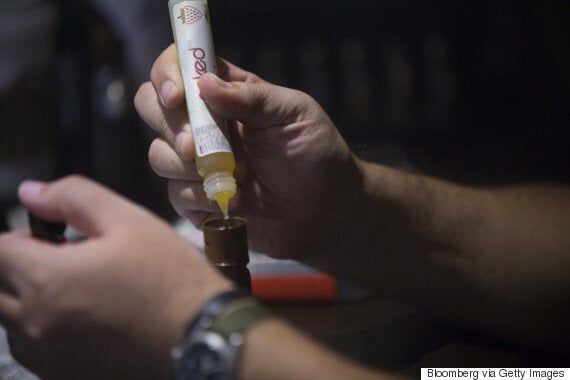On Feb. 23, 2017, the Canadian Constitution Foundation released a report titled "Vaping and the Law," in which we surveyed and compared vaping legislation from across Canada.
The chances are, unless you're a smoker or former-smoker, you may not even know what vaping is. E-cigarettes are battery-operated, electronic devices that heat a liquid and emit it as a vapour. This liquid, or "e-juice," contains no tobacco and is not burned. Depending on the operator's preferences, the e-juice and resulting vapour may contain a small amount of nicotine and various flavourings. Inhaling the vapour is colloquially called "vaping."

Vaping is far less harmful than smoking. Public Health England ("PHE"), an agency of the U.K. Department of Health, has said that vaping is 95 per cent less harmful than traditional cigarettes. This should not be surprising, as the main factor that makes smoking so deadly is inhaling the carcinogenic and toxic chemicals that are produced when tobacco is burned. It's the smoke that makes smoking so lethal. This is why Public Health England has also described e-cigarettes as "a great public health opportunity."
Opportunity indeed. Smoking kills nearly 40,000 Canadians every year and costs our health-care system approximately $17 billion annually, or $3,071 per smoker. Although smoking rates have dropped in recent years -- down to 17.5 per cent, perhaps due to the increased use of e-cigarettes during that time -- our most vulnerable communities continue to smoke at an alarming rate. For instance, in 2014, 62 per cent of Nunavut residents and 244,682 youth ages 12 to 19 were smokers.
It is especially cruel to prevent young people from accessing potentially life-saving technology.
Unfortunately, presented with the opportunity to save the lives of hundreds of thousands of Canadians and billions of taxpayer dollars, governments across Canada have had precisely the wrong instinct: to greatly restrict and discourage vaping. Instead of exploring creative policy options that could encourage smokers to switch to much less harmful e-cigarette technology, most of the vaping laws in Canada seem designed to keep smokers addicted to the very habit that is likely to kill them.
To avoid constitutional scrutiny and future litigation, vaping legislation should not erect irrational or arbitrary legal barriers that unnecessarily impede or inhibit smokers from switching to e-cigarettes. Such needless barriers include treating e-cigarettes as if they are traditional combustible tobacco products, banning e-juice flavours, prohibiting access for youth with no exceptions, and restricting the discretion of vape shop owners to demonstrate products to customers.
Every province -- other than Alberta and Saskatchewan -- currently has provincial legislation restricting the sale and use of e-cigarettes. The Canadian Constitution Foundation identified significant flaws in all the legislation we surveyed.

For example, every province with vaping legislation treats e-cigarettes as if they are similar in harm to smoking, encouraging the public to think that vaping is not appreciably different than smoking. This misinformation, actual or implied, is especially pernicious when it comes from the government. Many provinces further impede smokers' ability to access information about vaping, to acquire flavoured e-juices, and to receive product demonstrations to teach them how to use and care for their e-cigarettes.
Lastly, every province with vaping legislation absolutely prohibits the use of e-cigarettes by youth. It is especially cruel to prevent young people from accessing potentially life-saving technology at an age when they are most likely to first become addicted to traditional tobacco cigarettes. There should be exceptions to vaping age restrictions in cases where there is already an addiction and a doctor has approved e-cigarette use or where there is explicit and fully informed parental consent.
Canadian legislators should seize the opportunity to encourage smokers to switch to vaping, rather than making it harder.
Of all the legislation we examined, the worst was the federal government's Bill S-5, which was introduced last November. The final version of the bill could be significantly different than its current form but, as it reads now, Bill S-5 applies the same general regulatory approach to e-cigarettes that it does to combustible tobacco cigarettes. Flavoured e-cigarette liquids will be greatly restricted and there are no exemptions for in-store product demonstrations. No one under the age of 18 will be able to access e-cigarettes under any circumstances. Most troubling, the bill makes it an offence to inform the public that vaping is less harmful than smoking in connection with the sale of e-cigarettes, denying smokers potentially life-saving information.
Because Parliament's authority to enact Bill S-5 into law is based upon its national criminal law power, if enacted, this legislation will supersede all current provincial and municipal legislation.
E-cigarettes are a proven harm reduction technology that offers Canada an enormous opportunity to save lives and health-care costs. Canadian legislators should seize the opportunity to encourage smokers to switch to vaping, rather than making it harder.
Follow HuffPost Canada Blogs on Facebook
Also on HuffPost:
